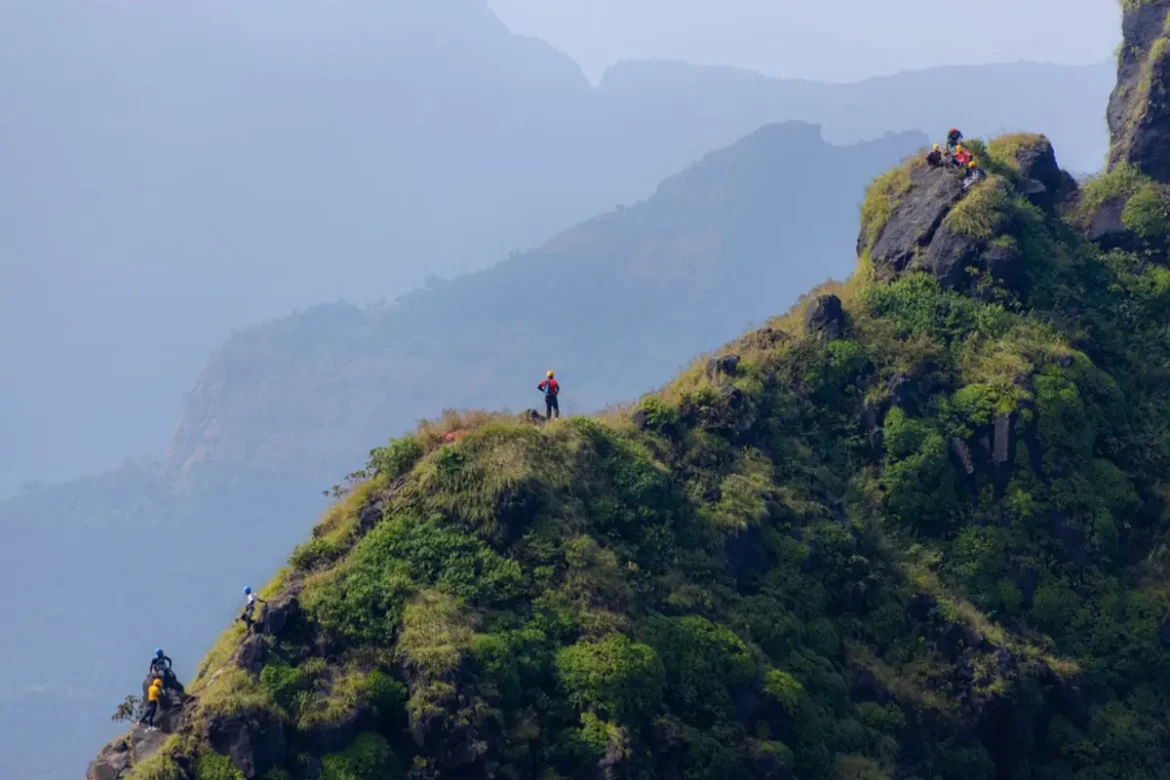Table of Contents
Trekking is your passion, so you came here to find some important guides for trekking. The concern you have is important to us. This guide includes a complete itinerary for Lingana Fort as well as a map, location, best time to visit, things to do, travel tips, and more. Hopefully, it will help you enjoy the fort and the hiking area. You’ll find that at the Fort, an exciting location for hikers and history buffs alike. Are you ready for an adventure?
Overview of Lingana Fort
| Location | Sahyadri Mountains, Maharashtra, India |
| Height | 2,969 feet |
| Built by | Chhatrapati Shivaji Maharaj (1648) |
| Purpose (Historical) | Defense & Prison |
| Purpose (Current) | Rock Climbing |
| Best Time to Visit | Winter (Nov-Feb) |
| Difficulty | Extreme (Technical Climbing Required) |
| Time Required | 1-Multiple Days (Depending on experience & route) |
| Activities | Technical Rock Climbing |
History of Lingana Fort
Built-in 1648 by the legendary Maratha emperor, Chhatrapati Shivaji Maharaj, the fort served as a watchful guardian. Due to its height, it provided a powerful advantage, keeping an eye on the central Konkan region and keeping out enemies like the Sidis. Lingana was not just a fort; it could also be used as a cage.
As a result of the Maratha rule, the fort was transformed into a high-security prison. Imagine a mountain carved with rock-cut dungeons that hold dangerous criminals. There are reports of single dungeons housing up to 50 prisoners!
The passage of time, however, is a relentless foe. Lingana’s fortress significance waned as the Maratha Empire’s grip weakened. After capturing it in 1818, the British took drastic measures to prevent it from becoming a rebel hideout. As a result of the destruction of the once-accessible paths, future climbers will face a difficult challenge.
Read another content: Bhangarh Fort – The Most Haunted Fort in India
How Difficult Is The Lingana Fort Trek?
The Lingana Fort Trek is considered to be one of the most difficult treks in the Sahyadri mountains of India. It is not for the faint of heart and is only recommended for experienced trekkers with a good level of fitness and rock climbing skills.
The trek is challenging for several reasons:
- The route is steep and uneven, with a lot of scrambling and climbing involved.
- There are several sections of exposed rock faces that require the use of ropes and climbing gear.
- The descent is even more difficult than the ascent, as it involves a lot of rappelling.
If you are considering doing the Lingana Fort trek, it is important to be aware of the risks involved and to make sure that you are properly prepared. You should only attempt this trek if you are in good physical condition and have experience with rock climbing and rappelling. It is also essential to go with a guide or group of experienced trekkers, as it is easy to get lost on the route.
What to Expect at Lingana Fort
The Fort is a dramatic and historic fort located in Maharashtra, India. Here’s what you can expect at Fort:
- A challenging Climb: The fort is perched on a 2,969-foot-tall pinnacle, and the ascent is no easy feat. The first half of the climb is relatively easy, but the second half is quite difficult. The rock-cut steps that once made the climb easier have been destroyed over time, so you’ll need to be prepared for some steep slopes, narrow ridges, and vertical walls. You’ll need proper climbing gear and experience for this trek
- Stunning Views: If you’re able to make it to the top, you’ll be rewarded with some truly incredible views of the surrounding Sahyadri mountains. The Konkan region is also visible from the summit
- A Glimpse Into History: Chhatrapati Shivaji Maharaj built the fort in 1648 as a penal settlement for the Marathas. There are still some traces of the fort’s former structures, including a grain store and some cisterns
- A Chance to See Some Wildlife: The area around Lingana is home to a variety of wildlife, including birds, monkeys, and even leopards. Be sure to keep your eyes peeled during your trek
Which time of year is best for visiting Lingana Fort?
The best time to visit Lingana is during the post-monsoon and winter months, generally spanning from October to February. Here’s why:
- Pleasant Weather: The weather during these months is dry and sunny, with comfortable temperatures. This makes the climb much more enjoyable than it would be in the hot and humid summer months.
- Clear Skies: The skies are typically clear during this time of year, which means you’ll have better views from the summit.
- Safer Conditions: The rocks can be slippery during the monsoon season (June to September), so it’s best to avoid climbing during this time.
It’s important to note that even during the best time of year, the climb to the Lingana trek can be challenging. Be sure to be in good physical condition and to be properly prepared before attempting the climb.
Map
How to Reach Lingana Fort
There are two main routes to reach the Fort, one from Maharashtra and the other from Pune. Here’s how to reach Lingana via both routes, along with the estimated cost:
Reaching Fort via Mahad:
- Take a State Transport (ST) bus or train to reach Mahad.
- From Mahad, you’ll need to take another bus to Panne village, located at the base of the fort.
- There’s a one-hour trek from Panne village to the Railing Plateau, which serves as the base camp for most trekkers.
Estimated Cost:
- Pune to Mahad bus fare – Rs 100 – Rs 200
- Mahad to Panne village bus fare – Rs 50 – Rs 100
- This route doesn’t involve any entrance fees.
Reaching Lingana via Pune:
- You can take a public bus or hire a car to reach the village of Mohari or Singapur near the fort.
- From Mohari/Singapur village, it’s a one-hour walk to the Railing Plateau.
Estimated Cost:
- Pune to Mohari/Singapur village (public bus) – Rs 150 – Rs 200
- Pune to Mohari/Singapur village (car hire) – Rs 800 – Rs 1200 (depending on the type of car and distance)
- This route also doesn’t involve any entrance fees.
Important Note:
- Reaching Fort itself from the Railing Plateau involves a challenging technical climb that requires proper gear and experience. It’s best to do this trek with a guide or as part of an organised tour, which typically includes the cost of equipment rental and guides.
Here’s a cost estimate for reaching Fort via Pune as part of a guided trek:
- Pune to Mohari/Singapur village (car hire) – Rs 800 – Rs 1200 (depending on the type of car and distance)
- Guided trek cost (including food, equipment rental, and guides) – Rs 2500 – Rs 4000 (This can vary depending on the operator you choose.)
Nearby Attraction Place Fort, Maharashtra, India

Raigad Fort
This was the capital of the Maratha Empire under Chhatrapati Shivaji Maharaj. It is a UNESCO World Heritage Site and is located about 10 kilometres from Fort. On a clear day, you can see the Raigad Fort from the top of the fort.
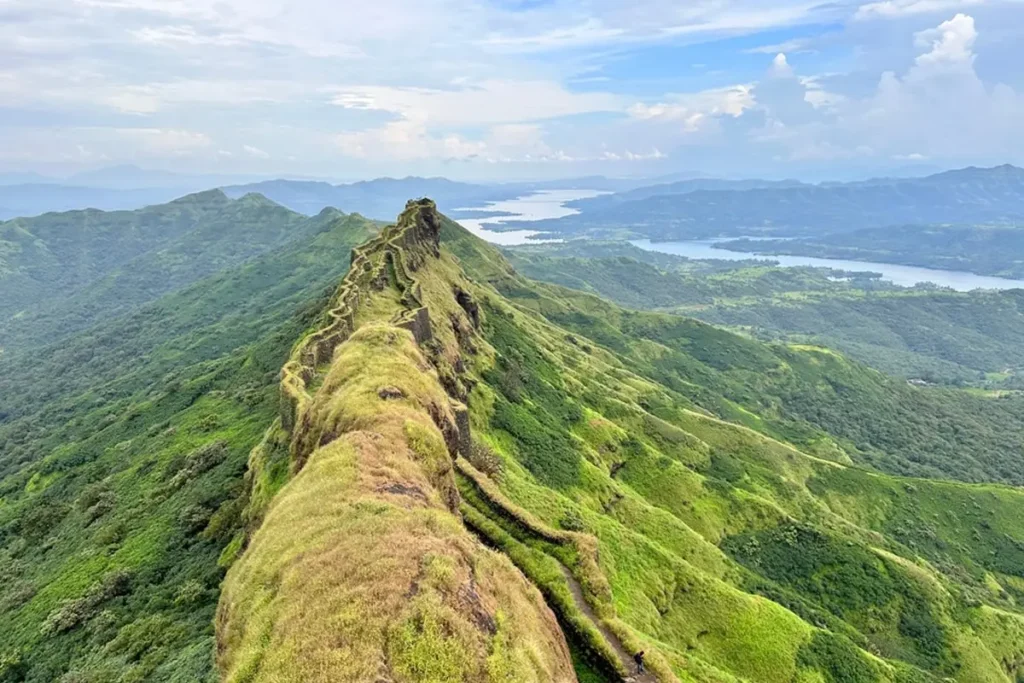
Torna Fort
This fort is also located near Raigad Fort and is known for its difficult trek. It is said to be the birthplace of Chhatrapati Shivaji Maharaj.
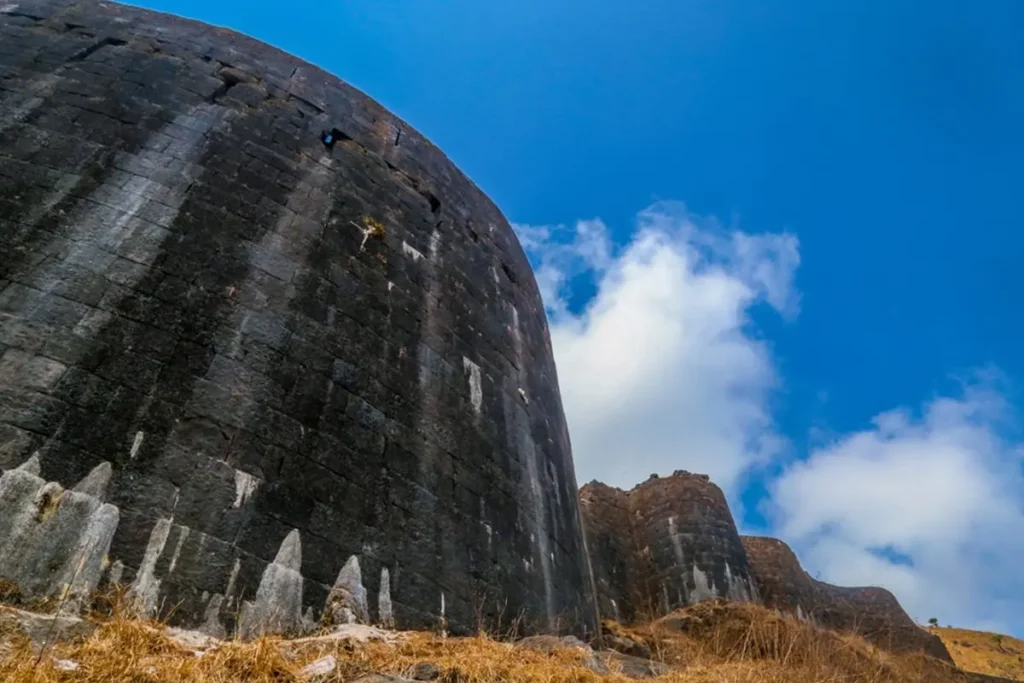
Thal Sajira Fort
This is a coastal fort located near Raigad. Constructed to enhance the writing quality, and optimise for word choice, structure, readability, and eloquence while preserving the original meaning, the Portuguese in the 16th century, this historical edifice stands as a testament to their architectural prowess.

Khanderi-Murud Island
This island group is located off the coast of Alibaug and is home to two forts – Khanderi Fort and Murud Fort. It is believed that the Marathas built the forts to protect the Konkan coast from pirate attacks.
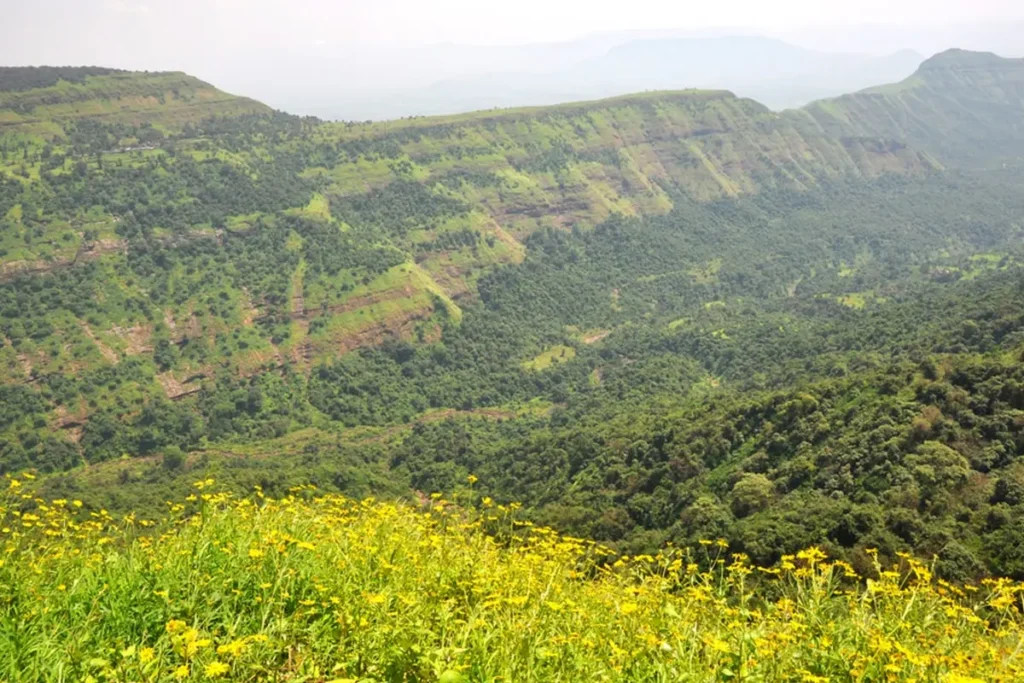
Matheran
This is a hill station located in the Western Ghats. It is a popular tourist destination known for its scenic beauty and car-free environment.
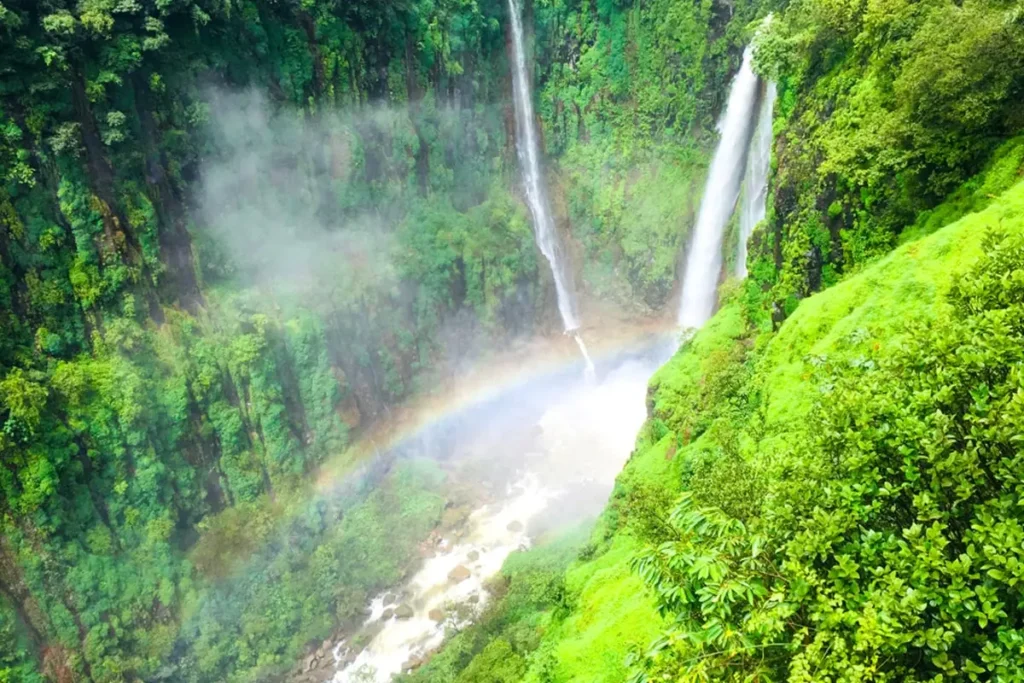
Thoseghar Waterfalls
These waterfalls are located about 15 miles north of Fort. They are a popular spot for swimming and picnicking, especially during the monsoon season.
Trekking to Fort: What You Should Carry
- Water: Don’t forget to stay hydrated on your trek! Bring plenty of water with you and opt for a reusable water bottle to help the environment.
- Hiking Shoes: Wear sturdy and comfortable hiking shoes with a good grip to avoid slips and falls.
- Appropriate Clothing: Dress in lightweight and moisture-wicking clothing suitable for trekking. Layer up to adjust to changing weather conditions, and remember to carry a waterproof jacket in case of rain.
- Backpack: Pack your essentials in a durable and lightweight backpack with padded shoulder straps for comfort during the trek. Ensure it has enough capacity to carry water, snacks, and other necessities.
- First Aid Kit: Pack a compact first aid kit containing essential items such as adhesive bandages, antiseptic wipes, pain relievers, blister pads, and any personal medications.
- Sun Protection: Shield yourself from the sun’s harsh rays by wearing sunglasses, a wide-brimmed hat, and sunscreen with a high SPF rating. Don’t forget to reapply sunscreen periodically.
- Trekking Poles: Consider trekking poles to provide stability and support, especially on steep and uneven terrain. They can reduce strain on your joints and maintain balance.
- Personal Identification and Emergency Contact Information: Keep your ID, emergency contact details, and any relevant permits or documents in a waterproof pouch or container.
- Trash Bags: Be sure to carry out all your trash and dispose of it properly according to Leave No Trace principles. Pack out any litter you may encounter on the trail with extra trash bags.
Frequently Asked Questions
Where is Fort located?
The fort is situated in the Sahyadri mountain range of Maharashtra, India. It is located close to Mahad in the Raigad district.
How do I reach the fort?
The trek to Fort typically begins in a base village called Mohari. From Mohari, trekkers can follow well-defined trails to the fort. The nearest major city with high connectivity is Pune, from where you can reach Mohari by road.
Is Fort suitable for beginners?
There are steep ascents and challenging trekking routes at Fort. Beginners with a reasonable level of fitness may attempt the trek, but it is advisable to prepare adequately and to be accompanied with experienced trekkers or guides.
What are the most suitable seasons to visit the Fort?
The most ideal time to visit Fort is during the post-monsoon and winter seasons, from September to February. The weather is pleasant during these months, with mild temperatures and clear skies, making it ideal for trekking and exploration.
Are there any accommodation options near Lingana?
As Lingana is primarily a trekking destination, there are limited accommodation options available in the vicinity. Visitors often prefer to camp overnight near the fort or stay in homestays or guesthouses in nearby villages.
What are the highlights of Lingana?
Lingana is renowned for its breathtaking panoramic views of the Sahyadri Mountains, its impressive architectural features, and the sense of adventure it offers trekkers. The fort also has several intriguing rock formations and caves waiting to be explored.
Are there any safety precautions to consider when visiting the fort?
Trekkers should exercise caution and be prepared for rugged terrain, slippery paths, and sudden weather changes. It’s essential to carry sufficient water, snacks, navigation tools, and emergency supplies. Additionally, following Leave No Trace principles and respecting the environment are crucial.
Can I explore the fort without a guide?
While it is possible to explore the fort without a guide, especially for experienced trekkers, having a knowledgeable guide can enhance the experience. To achieve this, historical insights, navigation assistance, and safety are provided.
Is camping allowed at the Fort?
Camping is permitted near the fort, and many trekkers stay overnight to witness sunrise and sunset views from the fort. However, visitors must follow camping regulations, practice Leave No Trace principles, and obtain the necessary permits if required.

